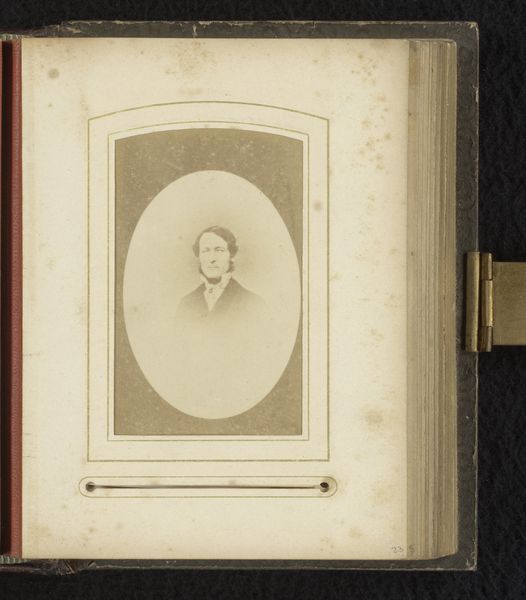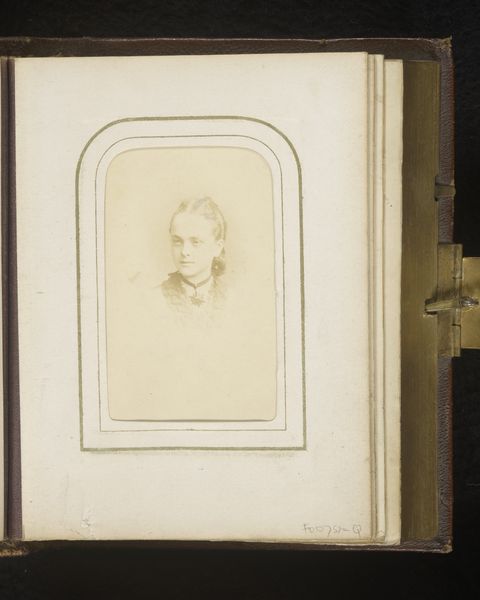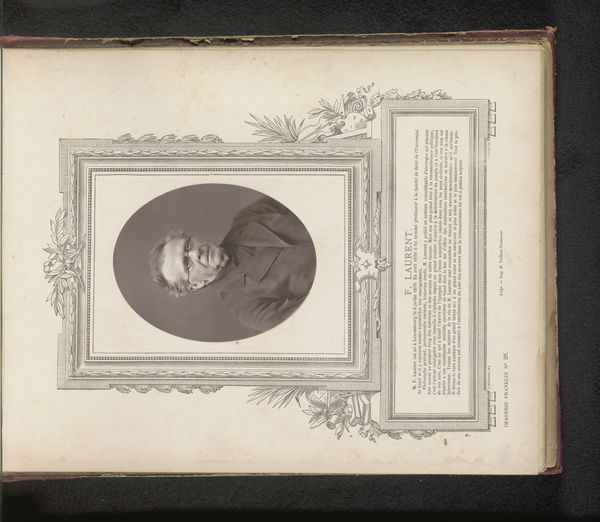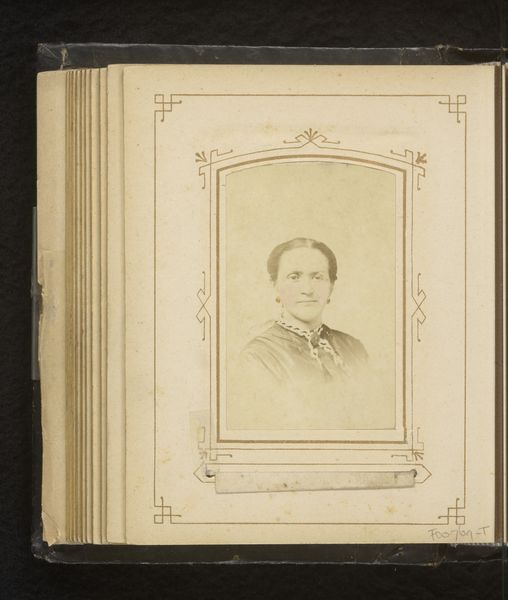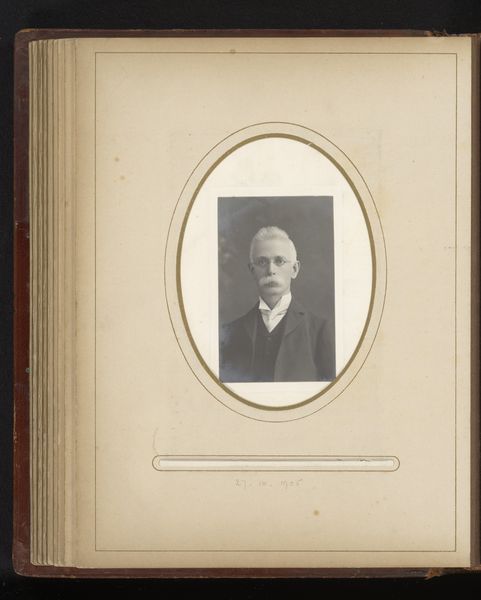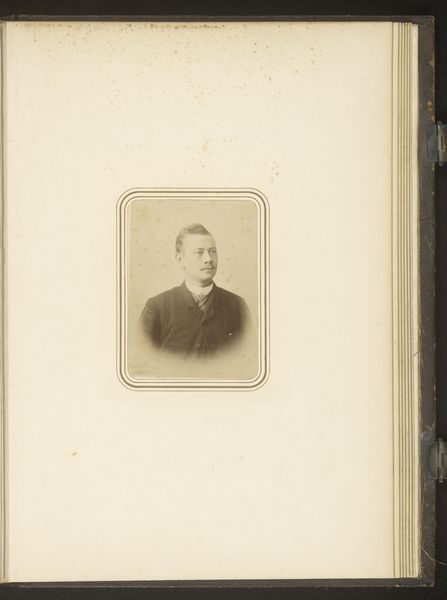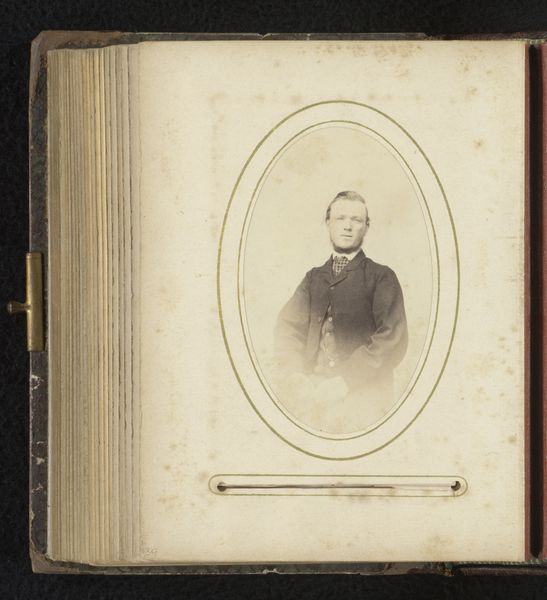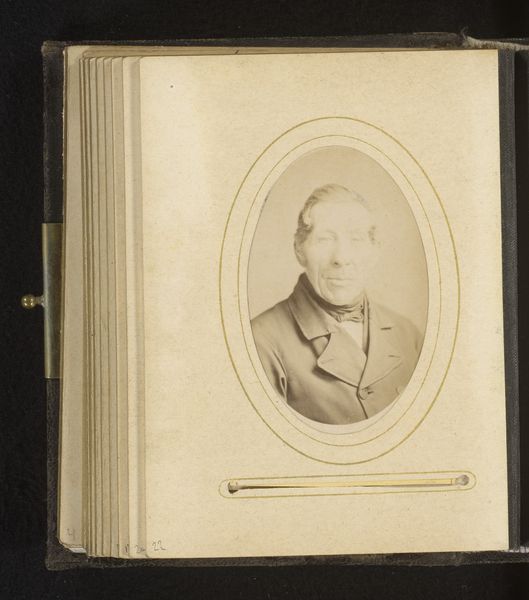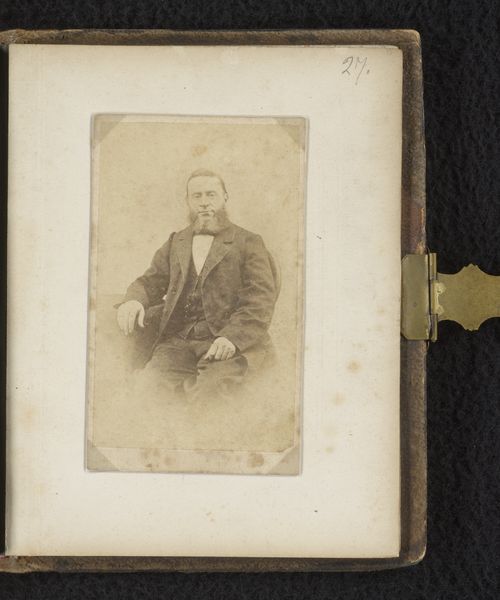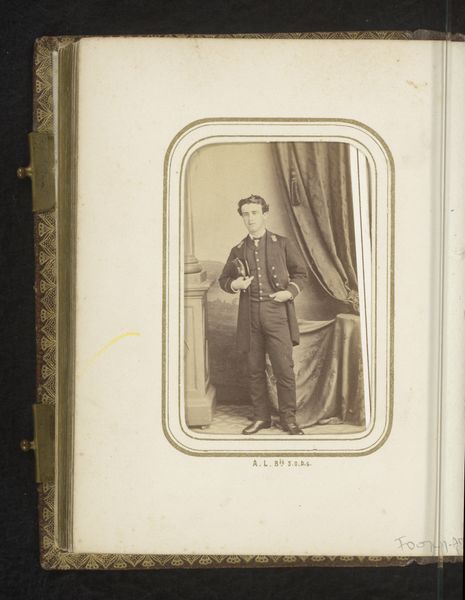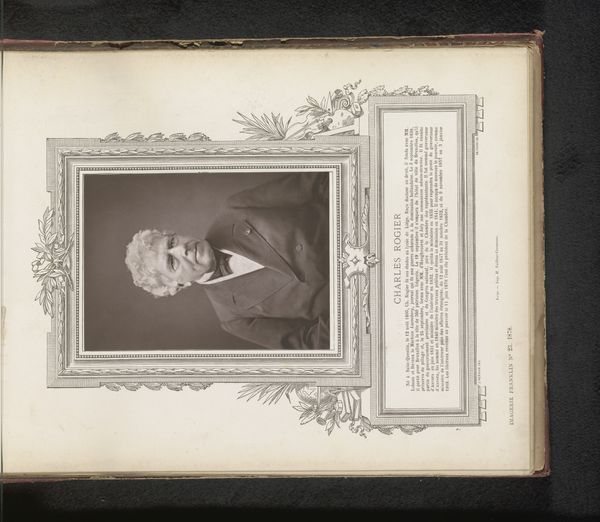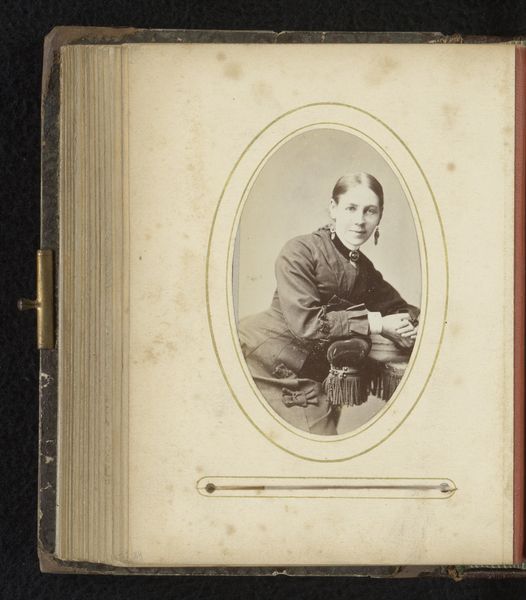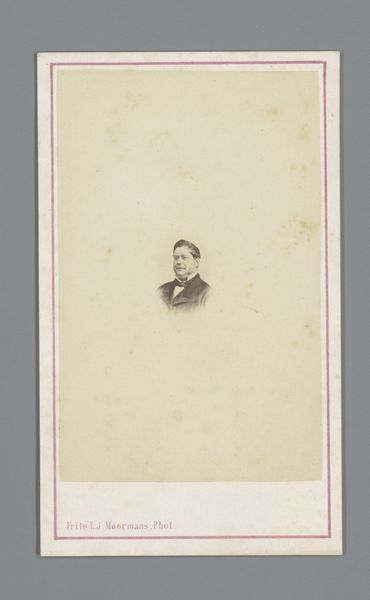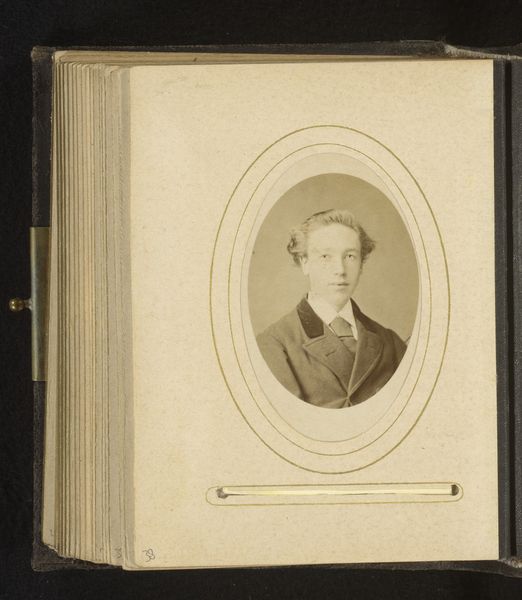
photography, albumen-print
#
portrait
#
photography
#
coloured pencil
#
watercolor
#
albumen-print
Dimensions: height 137 mm, height 97 mm
Copyright: Rijks Museum: Open Domain
Editor: Here we have an albumen print dating from around 1880-1900. It's a portrait of Marie Henriette Anne, Queen of Belgium. It’s so contained within that oval frame; she looks rather stern. How would you interpret this work within its historical context? Curator: Considering it’s an official portrait, the sternness isn't surprising. In the late 19th century, royal portraiture served specific functions. How do you think this image functioned within the Belgian monarchy’s self-representation? Editor: Perhaps to project power and stability? Like, “Here is your strong and composed Queen”? Curator: Exactly. Photography was becoming increasingly accessible, allowing wider dissemination of royal imagery. This albumen print, reproduced and distributed, could have been a tool to reinforce the monarchy's image and legitimacy. What does her attire and presentation tell you about societal expectations of royalty at the time? Editor: Her high collar and elaborate sleeves…it speaks to formality, certainly. And her up-do hints at respectability, perhaps reinforcing class distinctions. It feels so staged, very different from the candid photographs we see today. Curator: The constructed nature is key. Unlike spontaneous snapshots, staged portraits like these controlled the narrative, reflecting how royalty wanted to be perceived by the public and also controlling it through the museum it's held at today, versus an album, where it appears. Editor: That's a really interesting point – considering the role of photography and museums in shaping public perception of historical figures. Thanks! Curator: My pleasure. It shows us how seemingly straightforward images can reveal complex dynamics of power, representation, and public image-making.
Comments
No comments
Be the first to comment and join the conversation on the ultimate creative platform.
